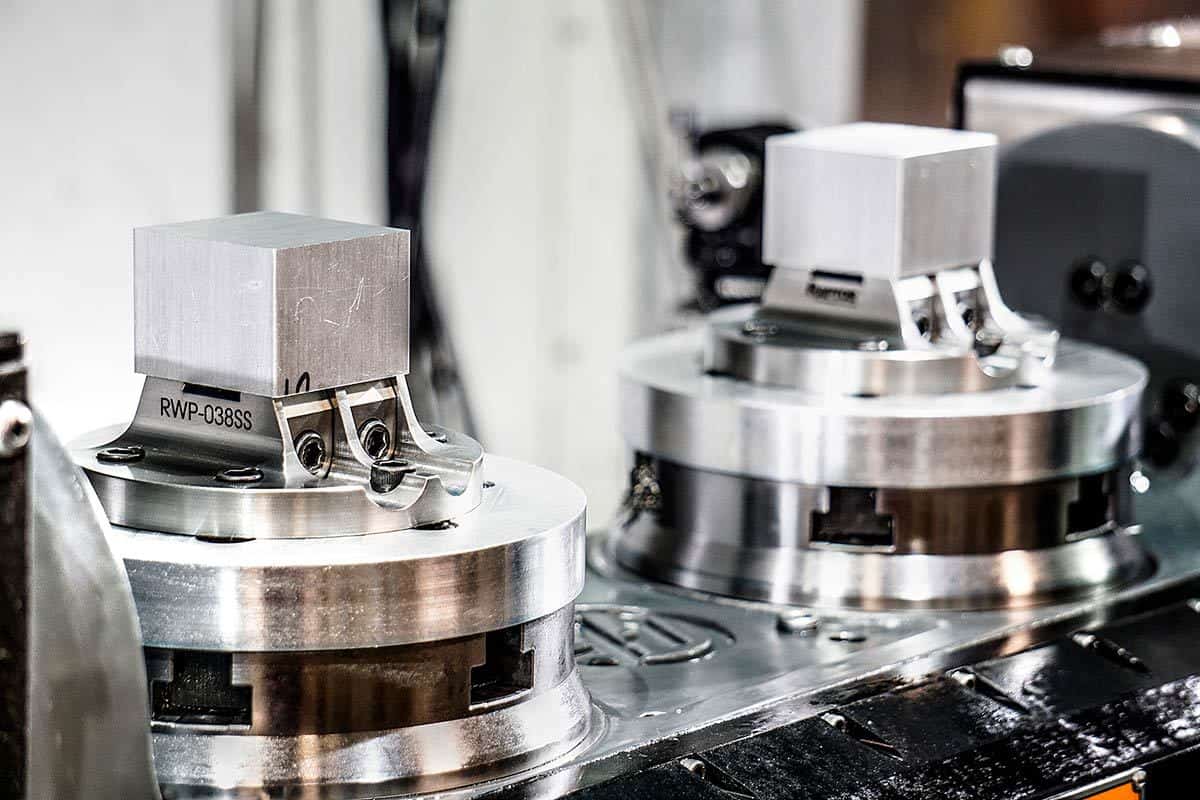Prototype CNC Machining: A Guide to Best Uses
Computer numerical control, or CNC for short, has revolutionized the manufacturing industry. The technology has evolved over the past 70 years to become a mainstay of modern production and is applied to the production of end-use parts in every manufacturing sector.
One area where this technology has proven to be of great benefit is prototype CNC machining. CNC machining prototyping solutions are integral in every industry. As a result, manufacturers often wonder about the best way to create prototypes of machined parts.
This article will explore what prototype CNC machining is and how it impacts the manufacturing industry. It will also cover the pros and cons of prototype CNC machining and mention a few tips for optimizing the prototyping process.
1.What is prototype machining?
Prototyping machining, or the prototyping process, is where manufacturers create a small batch of final parts to be produced later. The purpose of the prototyping phase is to convey visual information about the final part, understand the physical effects of the digital design, and determine the properties of the final product.
Functional prototypes of new parts also enable manufacturers to identify flaws in the design and eliminate them before mass producing the final product. Eliminating any flaws during the prototyping phase can make the production run more cost-effective.
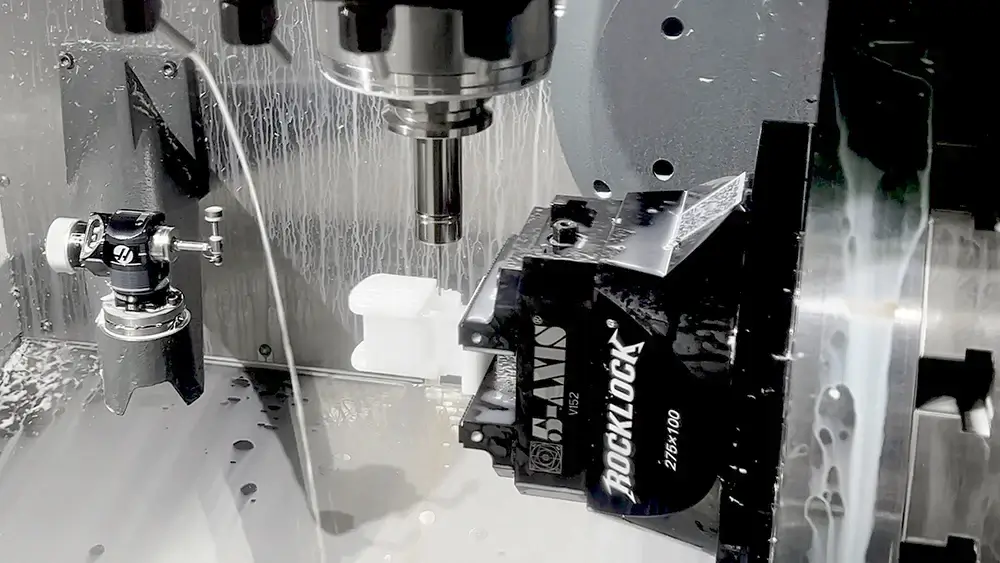
2.Why is CNC machining suitable for the prototyping process?
To say that CNC machining is suitable for the prototyping stage is an understatement. It is the technology of choice whenever a prototyping process is needed.
CNC technology uses computer control to monitor the movement of the cutting head and the workpiece. This movement can be controlled in the finest intervals, which is impossible if you choose an alternative prototyping process.
Prototype CNC machining starts with creating a 3D CAM model of the final product. Once the model is complete, it is converted to a CAD file. Unlike computer-aided manufacturing (CAM) files, CAD files can be directly understood by CNC machines because it contains instructions on how the machine should operate.
CAD files are converted to CAM files that contain G-codes and M-codes. G-codes control movement, and M-codes are related to the general operation of the CNC machine, such as coolant control.
3.What are the advantages of prototype CNC machining?
When considering whether to choose an alternative prototyping process or a CNC machining center to make your prototype, consider the following advantages of CNC machining:
1) Repeatability and consistency
Unlike other prototyping processes, CNC prototypes are highly repeatable. This means that any finished product manufactured through CNC machining will be an exact replica of any other finished product made using the same process.
The continuous production of identical products makes CNC suitable for prototype machining centers. The prototype should be an exact replica of the original design. This exact imitation is only possible with the low tolerances that CNC machining provides.
2) High Precision
Due to the strong control over the movement of the cutting tool, CNC machining allows for tight tolerances and high precision. These are essential for prototypes to keep them true to their original purpose. In addition, because the machining process is precise, manufacturers know that any defects in the manufactured prototype stem from the design and not the actual CNC prototyping stage.
3) Time-Saving Process
Prototype CNC machining does not require any molds or time-consuming prerequisites. Therefore, it is a high-speed process. The ability to modify the CAM/CAD file enables the machining center to make changes to the prototype, CNC machine it again, and get it back in no time.
4) Cost-Effectiveness
Prototype CNC machining saves manufacturers money in the long run. This is because any defects and errors can be corrected in a small batch of prototypes, rather than having to troubleshoot defects in the large number of final parts produced during the production phase.
In addition, future changes will only require minor modifications to the CAD file, rather than having to create a new design from scratch.
5) Material Versatility
Unlike other manufacturing processes such as 3D printing, prototype CNC machining can use a variety of highly machinable material options. These material options range from the strongest metals and alloys to materials such as wood and plastic. Therefore, the prototyping process can be completed using the same material as the final part, which is a great advantage.
For example, there are not many methods currently available that are capable of sheet metal forming. This makes CNC machining an excellent choice for metal prototypes that require greater mechanical stability without the possibility of weak points.
Some of the material options available for Prototype CNC Machining services include:
- Aluminum
- Steel
- Stainless Steel
- ABS
- Magnesium
- Titanium
- Zinc
- Brass
- Bronze
- Copper
- Teflon
- Polycarbonate (PC)
- Polypropylene (PP)
- Polymethyl Methacrylate (PMMA)
- Polystyrene (PS)
- Polyoxymethylene (POM)
- Polyethylene Glycol Monophosphatase
- Prostate Cancer Growth Factor
- Low Density Polyethylene (LDPE)
- High Density Polyethylene (HDPE)
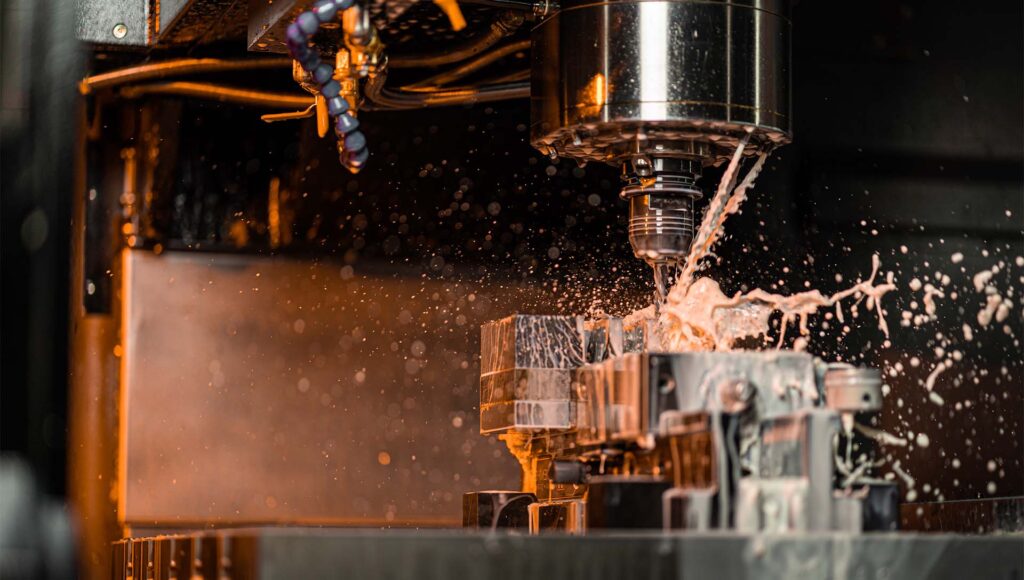
4.Limitations of CNC Machining Part Prototyping Process
When it comes to prototyping, using CNC methods is the best approach in most cases. However, while CNC has many advantages, other CNC features may be considered disadvantages. These disadvantages include:
1) Subtractive Process
Prototype CNC machining is a subtractive process, so it creates the final part by removing material from the initial workpiece. This results in increased material usage compared to additive processes, which create the final part by adding material to the workpiece. Due to the increased material usage, the machining center incurs higher material costs.
2) Some geometric limitations
Since prototype CNC machining works from the outside in, there are some geometries that cannot be manufactured using this process. This is especially true for internal components of a prototype. Other manufacturing processes, such as additive production, work from the inside out, so they are better suited to manufacturing internal geometries.
3) Technical expertise
Prototype CNC machining requires specific technical knowledge. Essential skills include making CAD files and operating CNC machines.
4) More expensive than 3D printing
Prototype CNC machining is more expensive than 3D printing due to the higher material costs that manufacturers need to bear. However, it is important to note that the additional expense of CNC prototyping comes with greater precision and the ability to handle a wider range of materials.
For other processes, such as 3D production, prototyping is limited to plastics such as PLA. While PLA is much cheaper than a block of metal, its other properties do not always meet prototyping requirements.
5.Application of Prototype CNC Machining in Industrial Manufacturing Processes
Prototype CNC machining is used in research and development across a wide range of industries. Some of the industries that rely heavily on it include:
1) Automotive Industry
Prototype CNC machining is the preferred process for designing parts and models in the automotive industry. The automotive industry requires gears and parts with ultra-tight tolerances. Unlike many other methods, CNC machining prototypes can meet this requirement.
2) Aerospace Industry
The aerospace industry constantly uses CNC machining prototypes to test the performance of new innovations in parts and materials. These parts are used in aircraft and monitoring equipment, so extreme care is required to ensure that they function optimally.
3) Building and Construction Industry
CNC machining is widely used in building and construction to manufacture interior and exterior elements. In the early days, the process was done using injection molds, which increased time and cost. However, CNC machining prototypes make it faster and cheaper.
4) Medical Industry
The medical industry is developing rapidly, and new medical devices and prosthetics are providing new possibilities for treatment. Medical device applications require microscopic precision and hard materials. Since other methods cannot achieve the required precision, CNC machining processes provide the highest quality products for functional prototyping of such equipment.
5) Military Industry
The military industry consumes a large portion of any economy’s budget, a large portion of which is spent on research and development. Military R&D involves the manufacture of new weapons, combat vehicles, aircraft, and their components. Since most of these use metals or even harder materials, rapid prototyping is essential. CNC machining prototypes are used at every step of military R&D.
6) Oil and Energy Industry
The oil industry requires parts with high physical strength that can be mined at extremely deep depths under the surface and extract resources. These parts are made using CNC milling prototypes or other custom CNC machining methods. In the energy industry, CNC prototypes are used to explore green energy resources that reduce environmental impact.
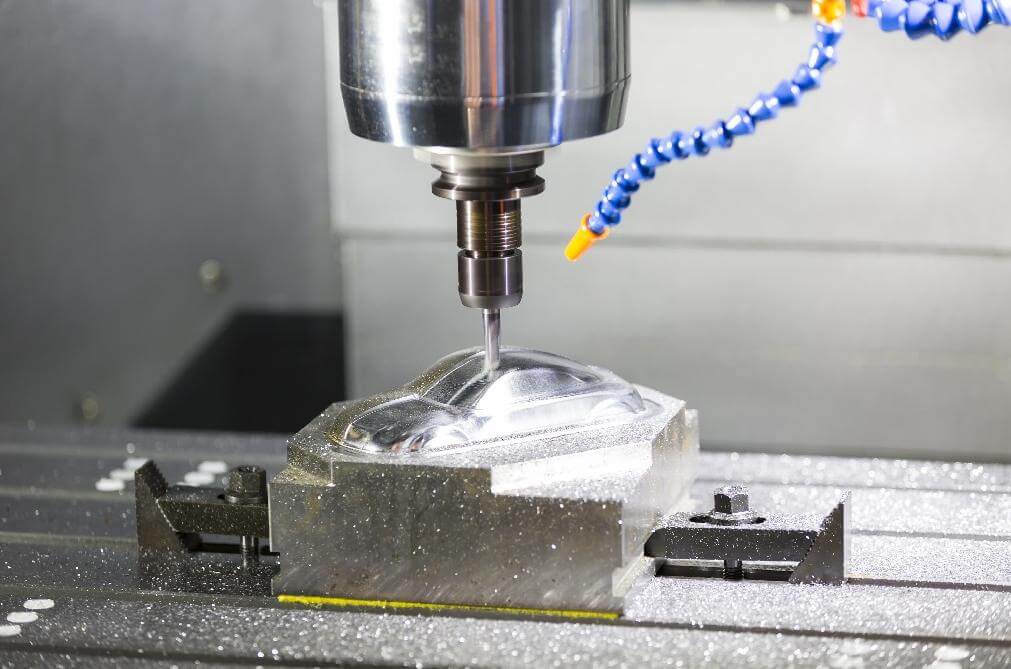
6.Prototype CNC Machining vs. 3D Printing
Professionals often argue about which of the two technologies (CNC machining and 3D printing) is the best prototyping method. Here is an overview of the differences between the two technologies based on a comparison of important factors:
1) Working Principles
Prototype CNC machining is a subtractive manufacturing method. It takes a workpiece, removes unwanted material with a cutting tool, and then shapes it into the final part. 3D printing, on the other hand, is an additive manufacturing process. It works by starting from scratch and adding material little by little, shaping it into the final part by melting and forming it.
2) Supported Materials
Prototype CNC machining supports a wide range of materials, from metals to wood and plastics. However, 3D printing is severely limited in terms of supported materials. Its capabilities are limited to making thermoplastic prototypes, as this method works by reheating and shaping the material.
3) Possible Geometries
3D printed parts can have complex internal geometries because these parts are made from the inside out. However, since CNC parts are produced using external cutting tools. It cannot make functional prototypes with complex internal geometries.
4) Waste
Prototype CNC machining, as a subtractive manufacturing method, has more material waste, but the waste cost can be recovered by selling recyclable scrap, while 3D molding, as an additive manufacturing technology, has a higher material utilization rate.
5) Manufacturing Time
While 3D printing is known as rapid prototyping, prototype CNC machining is much faster. It takes hours to make one 3D printed part. However, prototype CNC machining can make one part in minutes, or dozens of parts in the same amount of time as 3D.
7.Rapid Tooling: Injection Molding Prototypes via CNC Machining
Rapid tooling is a manufacturing technique that allows for the rapid production of machined tools, such as molds. This machined tool is manufactured using CNC machining technology. The tool is then used to form a prototype using an injection mold.
Rapid tooling is different from rapid prototyping, so the two should not be confused. Rapid tooling takes advantage of the benefits of CNC machining and injection molding while eliminating the disadvantages of each process. By using CNC to create the machined tool and using additive methods such as injection molding to create the final part, manufacturers can save costs while maintaining excellent precision.
Using CNC machining services for prototyping results in higher material costs. But using injection molding to create a prototype takes longer, and it is difficult to replicate the exact part of the original design. Rapid tooling, therefore, provides an intermediate approach between CNC prototyping and rapid manufacturing.
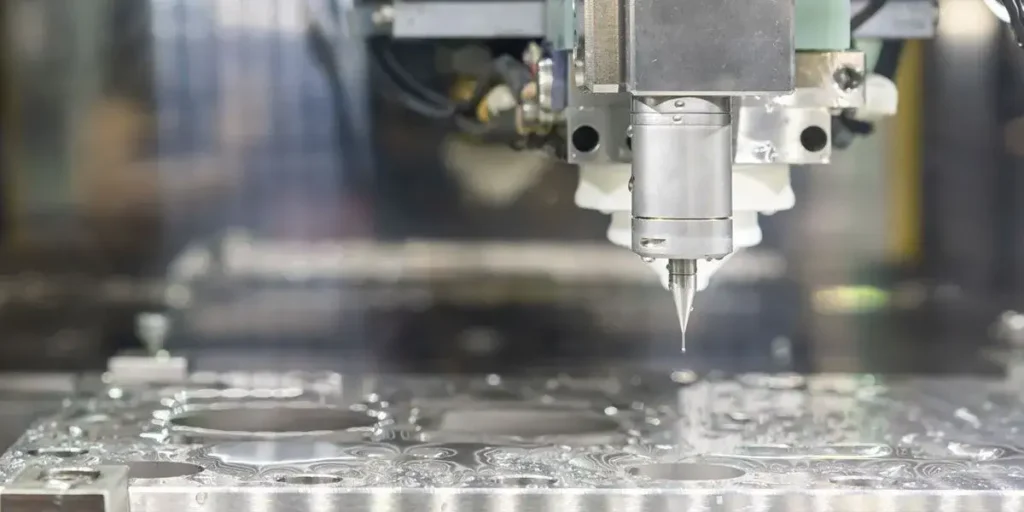
8.Tips for Preparing High-Quality CAD Models for Prototype CNC Machining Processes
The final part quality of prototype CNC machining can vary depending on the CAD files used. These designs convey visual information and provide critical dimensions for the component. Therefore, prototypes that require excellent part quality depend on high-quality models. Here are some tips for preparing CAD models and drawings:
1) Optimizing Design Elements
When using CNC machines, it is important to optimize design elements such as cavities and holes. For example, in the case of end milling, the maximum depth obtained is three times the tool diameter. Therefore, specify and limit the size of such cavities.
2) Ideal Wall Thickness
When creating drawings, pay attention to the minimum wall thickness. Too thin walls can lead to reduced mechanical stability of CNC custom parts and show weaknesses. As a rule of thumb, the thickness of metal walls should always be greater than 0.8 mm. For plastic walls, the thickness should be greater than 1.5 mm.
3) Choose the Right CAD Software
Understandably, the widespread use of CAD in manufacturing has led to a number of CAD software for custom prototypes in a variety of industries. While some software is good, others may be too complex or too limited in certain applications.
Therefore, choose the right CAD application for your specific industry. CAD software that is suitable for mechanical engineers and sheet metal forming may not be very suitable for construction, and vice versa. Find the CAD software that fits your specific prototyping needs.
4) Create a Checklist
An initial checklist of the design and features you need for your prototype is essential. It is easier to add features when designing a CAD file than to try to modify the file later.
5) Simplify the Drawing
There are many ways to create a CAD design for the same prototype. Keep the drawing simple to reduce unnecessary machining steps. For complex parts, it is best to split the drawing into two different parts so that they can be merged later.
9.Final Thoughts
Prototypes are an integral part of the manufacturing process because they can save costs and avoid long-term problems. Prototype CNC machining is a great way to advance the prototyping stage, providing a fast and accurate model.
Following the information provided in this article, high-quality prototypes can be created. An important step is to use the tips provided to make a perfect CAD design for rapid manufacturing, simple CNC machines, advanced CNC technology, or any other computer-aided manufacturing process.
If you are looking for an experienced CNC machining manufacturer, Xavier is your ideal choice. The Xavier team is well-equipped to provide high-quality CNC machining solutions. If you need more information or to discuss your machining needs with us, please feel free to contact us.
